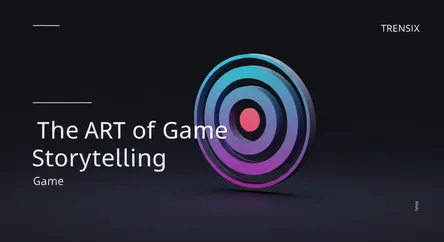Game
The Art of Game Storytelling

Discover how storytelling in video games creates immersive worlds, deepens player engagement, and transforms gameplay into an unforgettable journey.
What is it?
Storytelling in video games is the art of weaving a narrative through gameplay, character development, and world-building to create a cohesive and engaging experience. It's not just about cutscenes; it encompasses every element that contributes to the game's plot and lore, from dialogue and quests to environmental details and item descriptions. Unlike passive media like film, interactive storytelling allows the player's choices and actions to directly influence the narrative's direction and outcome, making them a central part of the story itself.
Why is it trending?
As gaming has matured as a medium, players increasingly seek more than just mechanical challenges; they crave meaningful and emotionally resonant experiences. The commercial and critical success of narrative-driven titles like The Witcher 3, God of War, and Baldur's Gate 3 highlights a strong market demand for deep, compelling stories. Advancements in technology enable developers to create more cinematic and nuanced narratives, while the rise of indie games has provided a platform for unique and personal storytelling experiments that push the genre's boundaries.
How does it affect people?
Effective storytelling profoundly impacts the player experience by fostering a deep emotional connection to the game's world and its characters. It provides context and motivation for the player's actions, elevating a series of tasks into an epic adventure. A powerful narrative can make victories feel more triumphant and losses more devastating, creating memorable moments that resonate long after the game is over. This emotional investment builds strong player communities dedicated to discussing lore, characters, and plot theories, extending the game's life and cultural impact.